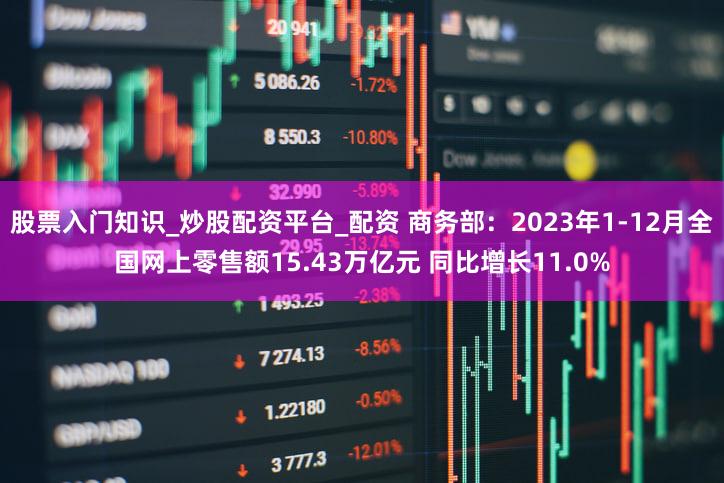
全国配资炒股门户模拟炒股详解:零风险练就股市高手
Meta description: 全国配资炒股门户提供模拟炒股功能吗?本文深入探讨全国配资炒股门户的模拟交易平台,详解其功能、优势和局限性,配资炒股免息配资平台帮助您安全高效地学习投资技巧。
Are you ready to conquer the stock market without risking your hard-earned cash? Imagine having a virtual playground where you can practice your trading strategies, test your gut feelings, and hone your skills before diving into the real thing. Sounds too good to be true? Well, it’s not! Many online brokerage platforms, including some prominent nationwide platforms like those often referred to as “全国配资炒股门户,” offer demo accounts or simulated trading environments. But how effective are these tools? Are they truly representative of the real market? This in-depth guide will dissect the ins and outs of simulated trading on these platforms, exposing the benefits and limitations to help you make informed decisions about your investment journey. We'll explore the nuances of these platforms, examining everything from the accuracy of their data feeds to the psychological impact of virtual versus real trading. We'll also tackle the common misconceptions surrounding simulated trading, helping you separate fact from fiction. Get ready to unlock the secrets to mastering the stock market without risking a single penny—let's dive in!
全国配资炒股门户模拟炒股功能深度解析
So, does the average "全国配资炒股门户" offer simulated trading? The short answer is: it depends. While many platforms boast demo accounts, the quality and functionality vary wildly. Some offer surprisingly realistic simulations, while others fall short, providing a less-than-accurate picture of the real market. This is where careful research comes into play. Don't just settle for any old demo account; choose wisely!
What to Look For in a Simulated Trading Platform:
- Data Accuracy: The platform's data feed should mirror real-time market data as closely as possible. Lags or inaccuracies can significantly skew your learning experience.
- Trading Platform Functionality: The simulated platform should closely resemble the actual trading platform. This includes order types, charting tools, and overall user interface. A different experience between the demo and live platforms is a recipe for disaster.
- Realistic Order Execution: The platform should simulate slippage, commissions, and other real-world trading costs. Ignoring these aspects creates an artificially inflated sense of profitability.
- Comprehensive Asset Coverage: A good simulation platform offers a range of assets to trade, including stocks, bonds, options, and potentially even futures and forex.
- Educational Resources: Beyond the simulated trading itself, consider if the platform provides accompanying educational materials, tutorials, or community support.
The Pros and Cons of Simulated Trading:
| Pros | Cons | |--------------------------------------------|----------------------------------------------| | Risk-free learning environment | Doesn't fully replicate emotional pressures | | Develop and test strategies | May oversimplify market complexity | | Build confidence before real investment | Can lead to unrealistic expectations | | Identify trading weaknesses and strengths | Limited access to advanced trading tools | | Gain familiarity with the trading platform | Results may not translate directly to live trading |
Choosing wisely is crucial. A poorly designed simulated trading platform can be more detrimental than helpful; it might give you a false sense of security. Think of it like learning to drive using a video game – it's helpful, but nothing beats the real thing.
Beyond the Basics: Advanced Features to Consider
Some sophisticated platforms offer advanced features in their simulated environments, such as:
- Paper Trading Competitions: These can provide a fun and engaging way to test your skills against other users.
- Backtesting Capabilities: This allows you to test your strategies on historical market data.
- Integrated Learning Modules: Some platforms combine simulated trading with educational content, creating a comprehensive learning experience.
Remember, simulated trading is a tool, not a magic bullet. While it can significantly enhance your learning curve, it's not a substitute for thorough research, risk management, and a solid understanding of fundamental and technical analysis.
Case Study: A Simulated Trading Success Story (Hypothetical)
Let’s say a beginner named Li Wei starts with a simulated account on a reputable platform. He initially loses money due to impulsive trades and a lack of discipline. However, the risk-free environment allows him to learn from his mistakes without significant financial consequences. He starts studying chart patterns, reading financial news, and focusing on long-term strategies. After several months of diligent practice and learning from his past errors, Li Wei finally achieves consistent profitability in his simulated trading. This success builds his confidence, and when he moves to real-life trading, he is much better prepared and equipped to navigate the market's ups and downs. This is just one example, of course; individual results vary greatly.
Frequently Asked Questions (FAQs)
Q1: Is simulated trading completely risk-free?
A1: While you won't lose real money, there are still risks involved. You could develop bad habits or unrealistic expectations that could negatively impact your real-money trading.
Q2: How much virtual money do I usually start with in a simulated account?
A2: Most platforms offer a starting balance of several thousand virtual dollars, allowing you to practice comfortably. This amount typically varies between platforms.
Q3: Can I use simulated trading to test algorithmic trading strategies?
A3: Many platforms support algorithmic trading, either through their own API or through integration with third-party platforms. Always check the platform's documentation to ensure compatibility.
Q4: How long should I practice simulated trading before moving to real money?
A4: There's no magic number. Spend enough time to feel confident in your strategies and risk management plan. Consistent profitability over an extended period in a simulated environment is a good indicator of readiness.
Q5: Are the commissions and fees in simulated trading the same as in real trading?
A5: Ideally, yes. Reputable platforms strive for accuracy. However, double-check the details, as some may simplify or omit certain fees for the sake of simplicity.
Q6: Can I use simulated trading to test options strategies?
A6: Yes, many simulated trading platforms include options trading. However, options trading is complex, and it's crucial to have a thorough understanding of the risks involved even in a simulated environment. You should make sure the platform accurately reflects the complexities of options trading.
Conclusion: Mastering the Market, One Simulated Trade at a Time
Simulated trading on a platform like "全国配资炒股门户" (or any other reputable platform) offers a powerful tool for aspiring investors. It’s a fantastic opportunity to learn and practice without the pressure of financial risk. However, remember that it’s just a stepping stone. Real-world trading introduces emotional complexities and market nuances that virtual trading can’t fully replicate. Use simulated trading wisely, combining it with continuous learning, rigorous research, and disciplined risk management to build a solid foundation for long-term success in the dynamic world of stock market investing. So, grab that virtual portfolio and start your journey to becoming a financially savvy investor today!
文章为作者独立观点,不代表财盛证券观点






